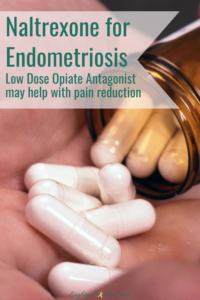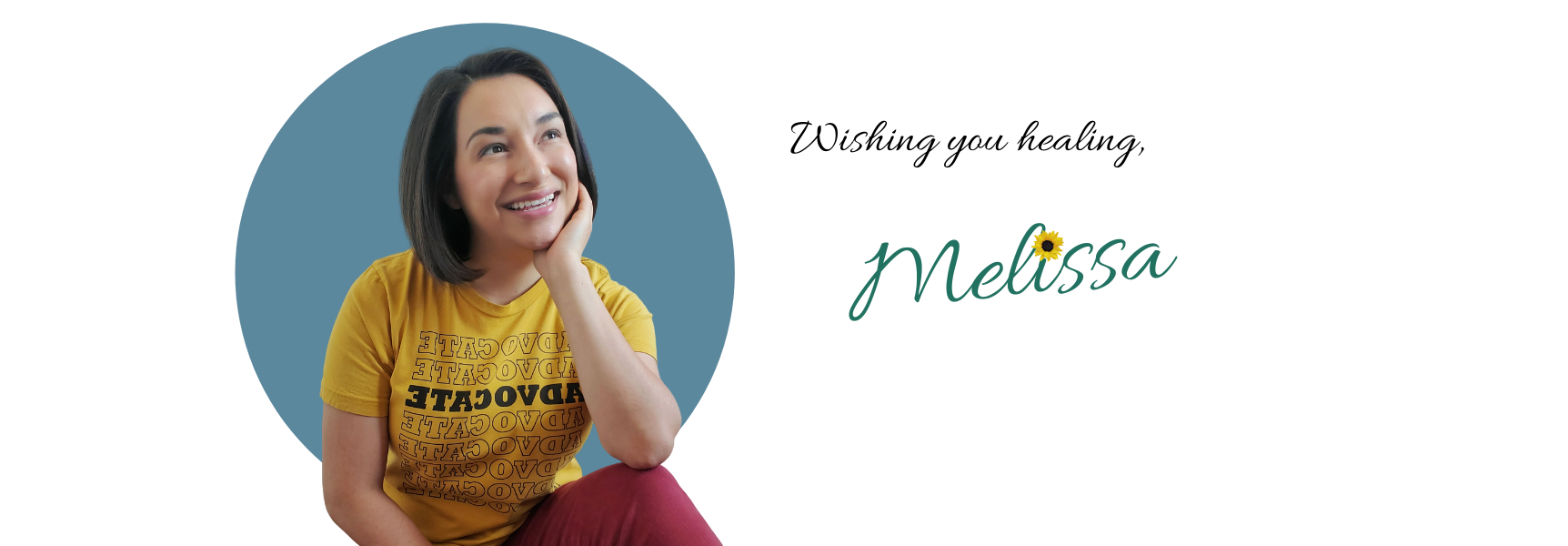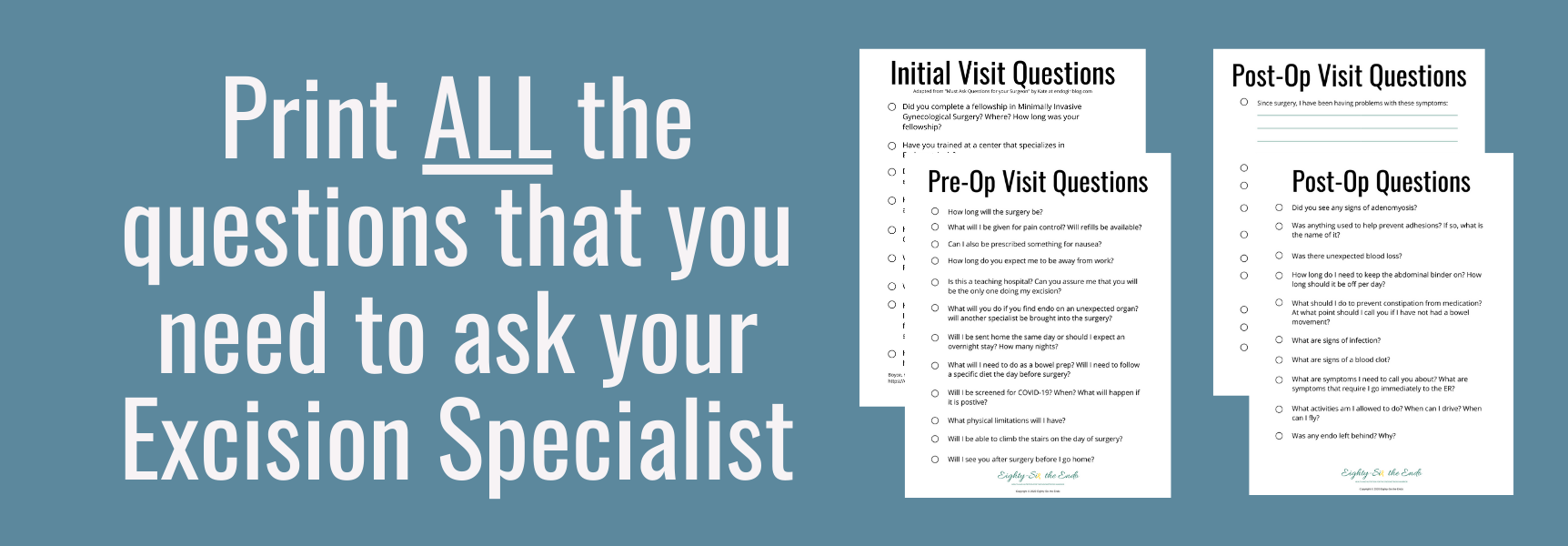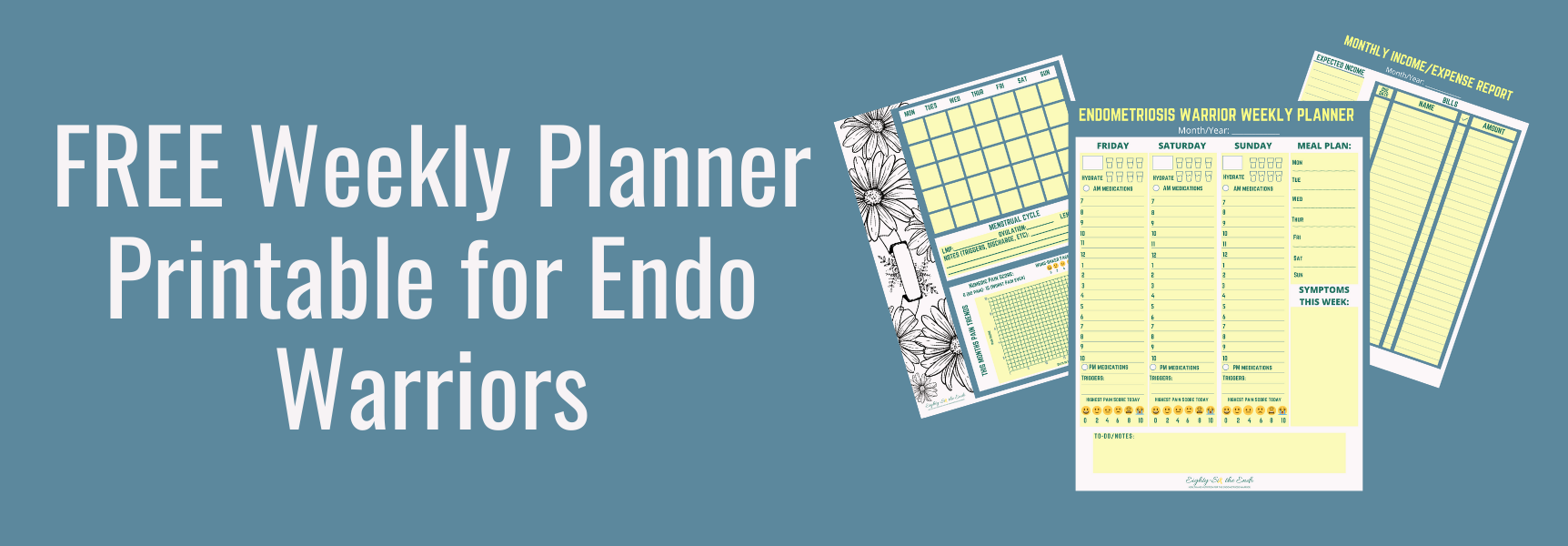It is no secret that endometriosis pain is debilitating. Even with the use of opioids, many menstruators are still experiencing pain. For this reason, many Endo Warriors often look to alternative and complimentary medicine for pain relief. Additionally, physicians have begun to note the off-label use of Naltrexone as a means for providing relief to chronic inflammatory conditions.
As a healthcare professional, I am very familiar with the use of a similar drug, Narcan (Naloxone); but only as an antidote to opioids and alcohol. Commonly used in emergency situations, Narcan aims to reverse the effects of overdose.
However, recently I learned some new, mind-blowing, information about its sister drug. Because although Narcan can be lifesaving in an emergent situation, its sister, Naltrexone, can be lifesaving in a chronic situation where improved quality of life is the end goal. So, of course, I have to share!
Naltrexone at Low Doses
Naltrexone is primarily known for its use in opioid and alcohol dependence. And for this reason, many physicians are reluctant to use it for off-label reasons. But for those that are courageous enough to prescribe it for off-label reasons, they are seeing notable results.
But how exactly is this happening? “It is hypothesized that lower than standard doses of naltrexone inhibit cellular proliferation of T and B cells and block Toll-like receptor 4, resulting in an analgesic and anti-inflammatory effect” (1).
Put simply, low-dose naltrexone is blocking the cells and pathways that play a role in inflammation and, consequently, pain.
Likewise, Low-Dose Naltrexone (LDN) may be able to restore endorphin production in people who suffer from ongoing fatigue, depression, anxiety, and have a history of endometriosis, PCOS, or autoimmune disorders (2).
Symptoms that may improve with LDN:
- Fatigue
- Depression
- Anxiety
- Pain
More incredibly, LDN is showing improvements in people with cancer, neuro-degenerative conditions, autoimmune conditions, and mental health conditions.
To see what other conditions may benefit from LDN, visit this website!
Is this an Evidence-Based treatment option?
At this point, the use of LDN is not a widely popular means of treatment. For one, it’s being used as an off-label treatment.  As in, it has not been approved by the FDA. Don’t get me wrong, though; Naltrexone is FDA approved, but only for the “treatment of opioid and alcohol dependence” (1).
As in, it has not been approved by the FDA. Don’t get me wrong, though; Naltrexone is FDA approved, but only for the “treatment of opioid and alcohol dependence” (1).
The FDA approval process for LDN takes an immense amount of funding, which has been difficult to achieve when its use among medical professionals is met with so much hesitancy (3).
This means that there is little to be found when it comes to peer-reviewed articles related to endometriosis and LDN. However, there are many journaled articles that have evaluated LDN use with Fibromyalgia, Multiple Sclerosis, and Crohn’s. And they show promising results!
Fortunately, endometriosis shares similar presenting symptoms to these conditions. Which has made this a possible treatment option for endometriosis specialists to consider.
Do NOT Consider Low-Dose Naltrexone If . . .
With any new intervention, it’s very important that you speak with a healthcare provider who knows your full medical history. There are cases in which LDN is not advised.
Most obviously, if you take opioids and consider them effective in relieving your pain, then you definitely should not take LDN. This will reverse the efficacy of your opioid.
However, if you have attempted multiple avenues and still have yet to find relief in symptoms, then you might consider talking to your doctor about starting LDN.
To help your case, before meeting with them in clinic, send them this article from the Pharmacotherapy: The Journal of Human Pharmacology and Drug Therapy (1). (Ps. Even if you don’t have access to the full article, your doctor likely does.)
Side effects of Low-Dose Naltrexone
Safety, efficacy and tolerability have been demonstrated in patients with MS, Fibromyalgia, and Crohn’s. Though, the studies available have a small number of participants.
But in relation to its use with endometriosis, Dr. Boyle, a frequent prescriber of LDN, has seen improved symptoms and improved fertility in his patients. He also has found it to be safe to take during pregnancy (2).
Even more so, he states that he has seen less miscarriages in those who continued to take it through pregnancy (2).
It’s important to note that not all side effects affect every individual. We each react different to all medications for that matter. Additionally, these side effects are more likely to occur during the first 2 weeks of taking LDN. If the side effects continue past that, then you should talk with your doctor.
Possible side effects include:
- Vivid Dreams
- Sleep Disturbance
- Nausea
- Headache
- Dry Mouth
Another important note: A “study reported that 77% of the participants reported no side effects from the use of LDN and no participants were hospitalized from adverse effects due to LDN” (1).
Basically, in most cases, it’s safe to take for the management of chronic inflammatory conditions. But, of course, more studies are always needed.
My Road to Low-Dose Naltrexone
“Exercise gives you endorphins. Endorphins make you happy.” – Elle Woods in Legally Blonde
I am a firm believer in the mind-body connection. The idea that stress, anxiety, and depression can poorly affect physical health just seems like common sense to me.
 Unfortunately, this infamous quote by Elle Woods does not seem to apply when it comes to endometriosis. Because although exercise is proven to increase endorphins, I often find it very difficult to exercise. Not impossible. Just difficult.
Unfortunately, this infamous quote by Elle Woods does not seem to apply when it comes to endometriosis. Because although exercise is proven to increase endorphins, I often find it very difficult to exercise. Not impossible. Just difficult.
Because the reality is that when I have severe pain, the last thing on my mind is exercise. Likewise, vigorous exercise with endometriosis can leave me with excess fatigue and pain- symptoms I already battle on a daily basis.
Depression
Ultimately, the fatigue and pain have led me into spiral of depression, for which my primary care physician wanted to start me on antidepressants. And although they can be effective, I know they come with a multitude of side effects.
Recent trials with medications have led me to realize that I am extremely sensitive to medications, and usually experience all of their side effects. So, I decided against her advice.
Instead, I spoke with my Endometriosis Specialist about my symptoms. Since he has been following me for 2 years now, he has seen the many obstacles I have faced in such a short time.
Moments of autoimmune considerations, combined with ER visits, have still led to limited answers. Because, although we know that I have endometriosis, we also know that there is likely something else going on. But it has yet to be discovered.
Due to my unique presentation, my doctor decided that I was a good candidate for LDN; especially since it has shown improvements in PMS symptoms and fertility.
My Experience with Naltrexone
My experience with Low-Dose Naltrexone is not extensive, but I can honestly say that I have felt improvements since starting LDN last week.
I know, it’s hard to believe. Maybe its placebo, but maybe it’s not! This improvement in my mood is what I have been waiting for. Because in my heart, I am a fun, happy, friendly, and silly person.
But these past few months have demonstrated a side of me that I never wanted to know. My bought of depression was worsening every minute that I didn’t feel like myself. Sad. Apathetic. Irritable. Foggy. Drowsy. Indifferent.
I was spiraling.
But since day 4 of my daily dose of Low-Dose Naltrexone, I have noticed increased energy and passion. I have caught myself singing and dancing more often; something I have been known to do without even realizing it. Basically, I feel like myself again.
Not to say, my pain is gone; I still had a flare this week. But overall, things are looking up and I am loving it!

UPDATE (5/21/19)
After just 4 weeks of LDN, I can confidently say that it is working! My energy levels have increased, and are still continuing to increase.
Before starting LDN, my PMS symptoms and depression were at their worse around ovulation and the week before my period, but since starting LDN, I have maintained steady moods.
And finally, I did not have any cramping until I actually started my period! Even better, I started this menstrual cycle with cramping that was tolerable and minimal compared to an previous months this past year.
So, even though I know there is no cure for endo, I can honestly say that Low-Dose Naltrexone is helping my endometriosis related pain; physically and emotionally! It’s incredible, and definitely worth looking into.


- Berlau, D. J., Patten, D. K., & Schultz, B. G. (2018). The Safety and Efficacy of Low‐Dose Naltrexone in the Management of Chronic Pain and Inflammation in Multiple Sclerosis, Fibromyalgia, Crohn’s Disease, and Other Chronic Pain Disorders. Pharmacotherapy: The Journal of Human Pharmacology and Drug Therapy, 38(3), 382-389. https://doi.org/10.1002/phar.2086
- Interview with Dr. Phil Boyle, Director of the NaPro Fertility Care Clinic in Dublin, Ireland. (2016). Retrieved from https://www.ldnscience.org/resources/interviews/interview-phil-boyle
- Further Questions and Answers About LDN. ( 2009). Retrieved from https://www.lowdosenaltrexone.org/further_q_and_a.htm



